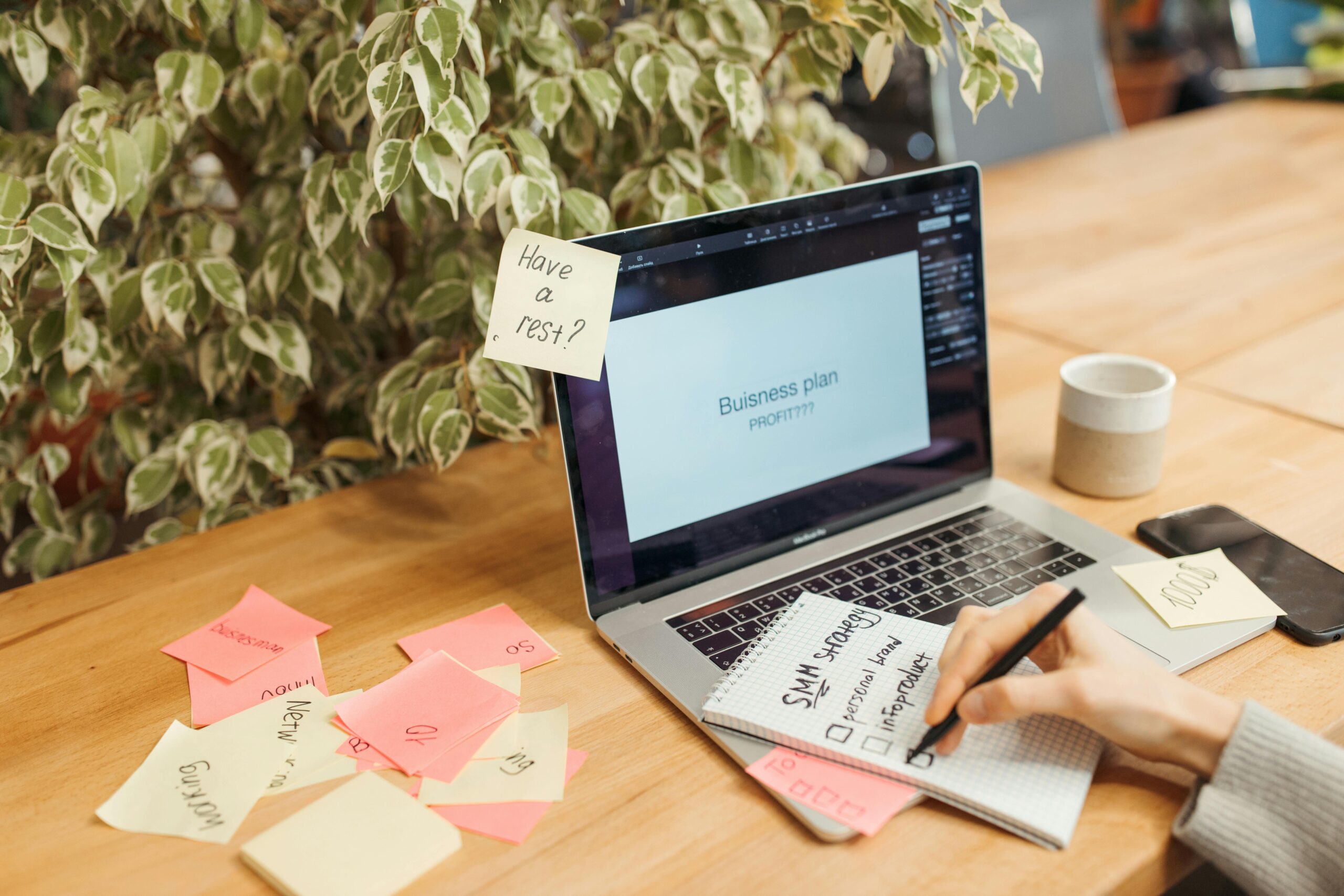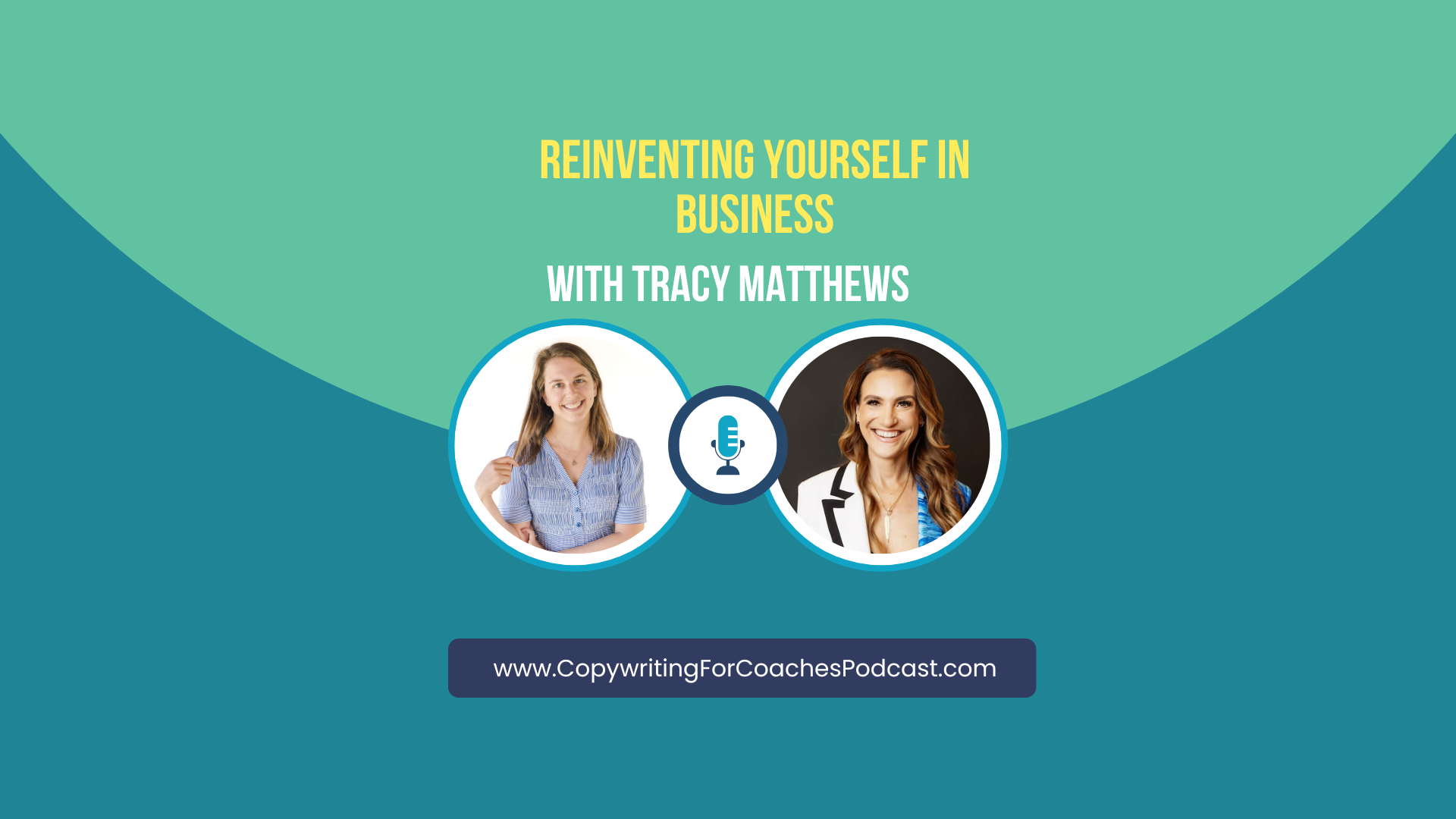Landing pages are indispensable tools for turning casual visitors into loyal customers. But what exactly do we mean by landing page essentials, and what makes a landing page convert?
In this comprehensive guide, we’ll explore the core components of a high-converting landing page and crafting key copy that resonates with your audience.
What Is A Landing Page?
First, I want to clarify what we mean by a landing page (because there are different types!).
If you’ve been an entrepreneur for a while, you probably already know that a landing page is the page you visit after you click on a specific link or advertisement, such as a Facebook ad. The main purpose of a landing page is to convert visitors into leads or customers by encouraging them to take a specific action, such as signing up for a newsletter, downloading a free resource, or making a purchase.
There are actually different types of landing pages:
- A direct-to-sale landing page is when you go straight to a sales page after clicking on an ad.
- A lead magnet landing page goes to a page where the visitor can “opt in” to your email list by giving their name and email address. These have also been called a “squeeze page” because it uses an incentive to “squeeze” the visitor into providing their email address.
Unlike a website’s homepage, which typically serves as a general introduction to a company or organization, a landing page has the singular focus to collect an email address and build your email subscriber list. There are no links or options to do anything else.
Why Do You Need A Landing Page?
The primary purpose of a landing page is to generate leads, and there are a number of other benefits to doing it this way, which I’ll discuss in a minute.
First, consider that if you send traffic to your website home page, they may visit it and then never return again. However, when they arrive on a landing page, you can capture these leads at a much higher rate—and you can easily segment and nurture them as well. By offering something of value (that they can’t just Google to find the answer) – like a free video series, webinar registration, or checklist – you can encourage visitors to provide their email address, turning them into leads for your sales funnel.
Landing pages allow you to create focused marketing campaigns with specific objectives. By customizing landing pages to match the message of your ads, there is a more seamless user experience and much higher chance of conversion.
Another benefit is that decisions are easier to make when you analyze the data. Landing pages enable you to know your audience better. By observing their behavior and conversions, you can gain insights into what works and what doesn’t, allowing you to make data-driven improvements.
What Makes A Landing Page Convert?
If you’re wondering “How do I create a good landing page for converting?”, then keep reading to see what is needed on a landing page. Landing pages play a pivotal role in turning casual visitors into valuable leads and customers.
Especially if you are running cold traffic to your landing page (people who have not heard of or interacted with your brand before), they click on your ads because they resonate with your messaging in some way.
In this section, we’ll dive into the core elements that separate an average landing page from a conversion powerhouse. We’ll unlock the secrets to crafting landing pages that not only captivate your audience but also drive them to take that crucial next step – whether that be signing up for your newsletter, downloading an irresistible front-end gift, or making a purchase.
Let’s explore landing page essentials for more conversions.
The 10 Landing Page Essentials
To increase conversions from cold traffic clicking on your Facebook ad and landing on your landing page, here are landing page essentials to include:
1. Clear Value Proposition
Within seconds, visitors should understand what your product or service is, how it benefits them, and why it’s unique. Clearly state the value proposition and what problem your offering solves—before they have to scroll down.
2. Compelling Headline
Your headline is the first thing visitors see, so make it attention-grabbing and curiosity-inducing. Clearly communicate the unique value proposition so that visitors are eager to keep reading. Also include a strong subheadline to provide additional context and make them feel that they are in the right place and like you are talking directly to them. Headlines can be tested on ads to get data, then tweaked on the landing page based on what’s working.
3. High-Quality Visuals
Include relevant and high-quality images or videos that showcase your product or service in action. Visuals can help create an emotional connection and enhance the overall appeal.
4. Include the Lead Form Above The Fold
Don’t make them have to scroll down to input their name and email address. Keep the form fields minimal and only ask for essential details. Reducing friction in the conversion process increases completion rates.
5. Include a Strong Call-to-Action (CTA)
Place a clear and prominent CTA button that stands out from the rest of the page. Use action-oriented text, such as “Get Started,” “Sign Up Now,” or “Get Your Free Trial.” Remove all other navigation buttons so that the ONLY action they can take is to give their email address to opt-in. Make your CTA stand out and use action-oriented language. Clearly state what action you want visitors to take.
6. Use Trust Indicators
Build trust with your audience by including customer testimonials, reviews, case studies, or trust badges from well-known organizations or security certificates. This includes both social proof (you can highlight the number of customers or clients you’ve served, the number of programs sold, or any other relevant metrics that demonstrate your popularity and credibility) and a brag bar of logos of who you have worked with before. This is especially important for cold traffic!
7. Seamless User Experience
Ensure your landing page has a responsive design and is optimized for all devices (desktop, mobile, tablet) to provide a seamless experience for users regardless of the platform they use. This includes quick loading times to reduce bounce rates and improve user experience.
8. Instill a Sense of Urgency
Give visitors a reason to sign up immediately. Explain the benefits users will gain by taking action now rather than later.
9. A/B Testing
Continuously perform A/B testing to test different elements of your landing page and identify what resonates best with your audience. Test variations of headlines, CTAs, visuals, and content to identify what resonates best with your audience and make data-driven improvements.
10. High Quality Copywriting
Take a strategic approach to copywring so that you communicate the unique value, build trust, and guide visitors towards taking action. (See the next section for exactly how to do this!)
Remember, the key is to provide a seamless experience that aligns with your Facebook ad’s promise. Continuously monitor and analyze your landing page’s performance to make data-driven improvements and boost conversions.
Use AI for Faster Landing Page Creation
You can use AI to help you with some of these components. While it typically cannot write the whole landing page for you in a way that converts, it can help you save time with the research and ideation process.
Here are some example prompts that you can use:
- “What are the biggest challenges of a [coach/your ideal client here] in the [industry/niche]?”
- “What are some objections of a [coach/your ideal client here] in the [industry/niche]? Give two ways that you can overcome each of those objections.”
- “Write 7 curiosity-inducing headline options for this landing page [paste the rest of your landing page copy here]” Then choose the best headline option.
- “List all the benefits of [describe your offer in detail]”
- “Give me 5 ways I can instill urgency on this landing page [paste the rest of your landing page copy here].”
Implement these tips to create high-converting landing pages or to optimize your existing landing pages. Once these landing page best practices are in place, then we need to look at how to continue to optimize and improve the landing pages to continue to boost conversion rates.
4 Landing Page Copywriting Tips To Make Opting In An Easy Yes
Creating a high-converting landing page requires a strategic approach to copywriting. Here are the copywriting landing page essentials you need to know:
- Know Your Audience: Empathize your target audience’s pain points, and understand their desires and motivations. Resonate with their specific needs, using language they use when they are talking.
- Focus on Benefits, Not Just Features: Clearly explain how your product or service will benefit the user. Highlight the outcomes and solutions it provides, rather than just listing its features. Be clear on how they can save time, money, and energy with your offer.
- Create Concise, Relevant, and Scannable Content: Break up the copy into easily digestible sections with subheadings, bullet points, and numbered lists. Vary the font with use of bold, italics, and underline. This makes it easier for visitors to quickly grasp the key points. Use clear and concise language that avoids jargon. Highlight the key benefits and features in bullet points or short paragraphs.
- Address Objections: Anticipate common objections and questions by providing clear answers to overcome them. This reassures visitors and reduces hesitation.
By following these copywriting tips, you can significantly improve the effectiveness of your landing page and boost your conversion rates. Remember, the key is to communicate value, build trust, and guide visitors towards taking action.
Continuous Optimization and Post-Conversion Strategies
Clients often hire me because their funnel that had been working well for a while…is no longer working. This is why ongoing optimization of a landing page is crucial for maintaining its effectiveness and maximizing conversions over time.
Optimization to maximize your sales involves continuously analyzing data, monitoring performance metrics, and making iterative improvements to the page based on insights gathered. By continually refining the landing page and implementing post-conversion engagement strategies, businesses can enhance customer satisfaction, foster loyalty, and drive repeat business.
So if you’ve got your landing page up and running…the next big questions are:
What metrics do I track?
And
Now what do I do?
Let’s discuss those questions in the next two sections.
Landing Page Metrics to Track
While there are tons of numbers that you could track, I like to keep it simple.
The three primary numbers you MUST know are:
- Number of sign ups
- Number of unique visitors
- Opt-in conversion rate (which is the number of sign ups divided by the number of unique visitors)
You can also use heat mapping software to see where visitors are scrolling to on your landing page. It provides a visual representation of how visitors are interacting with your landing page. This can help you optimize your specific high-converting landing page structure.
What To Do Post-Conversion
Once the visitor submits their email address, then don’t let it collect digital dust—otherwise your email list size becomes a vanity metric!
Once they opt-in, immediately send them to a Thank You Page.
The goal of this page is to keep them into your world with an invitation to connect with you on social media, share your most popular blog post or podcast episode, or have a one-time offer (OTO).
After they go to the Thank You Page, trigger an automated email sequence to welcome them into your world, give them a free gift, and nurture them. Build a relationship and continue offering value before pitching your products or services.
As they open and read your emails (which are being sent on automation), the end of the sequence can lead to a paid offer.
Keep in mind that the email sequence shouldn’t be limited to just the initial welcome. Continue to nurture the leads with regular emails, keeping them engaged and informed about your latest offerings and updates.
Build a High-Converting Landing Page and Funnel
Now you know landing page essentials, what makes a landing page convert, and the high-converting landing page structure.
However, the lead magnet landing page is just one piece of the puzzle to get your offer to convert. You’ve also got to have an email sequence and a sales page in place…and even a conversion event like a live challenge or a webinar.
But in order for it all to convert, the messaging, mapping, and copywriting all have to work together and flow seamlessly…
That’s one reason why I created The Power Hour to make sure that you are ready to spend money on ads with an optimized funnel throughout the customer journey.
If you want…
- A roadmap for your marketing efforts
- A checklist to know exactly what you need to do in the next 15 minutes
- What your results mean and how they can increase your conversions
…then download the Sales Funnel Audit right now to deep dive into your funnel strategy.
You’ll get clear action steps you can take to make your digital marketing more simple AND more profitable!
*Note: this blog first appeared in its original form as a guest post on Meredith Kallaher’s blog. It has since been updated here.




